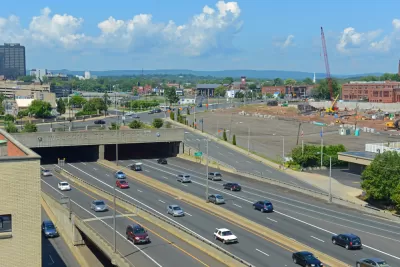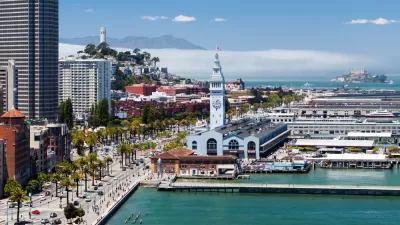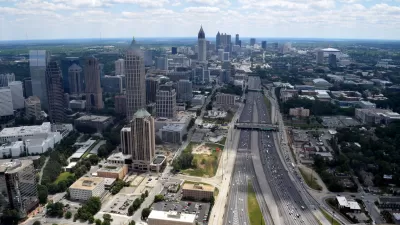A new plan would spend an estimated $17 billion to remove a huge chunk of the Interstate Highway System's footprint in Hartford, Connecticut.

Tom Condon reports on an ambitious new plan to recover some of what was lost when interstate freeways were built through the city six decades ago.
First, the historical context:
Decades ago, the construction of I-91 cut Hartford off from the Connecticut River. I-84 isolated the North End from downtown and consumed a large swath of land and many historic buildings, including the majestic Hartford Public High School campus. The interchange of the two highways laid waste to part of the central business district.
East Hartford wasn’t spared; its massive “mixmaster” interchange occupies an area the size of downtown Hartford.
Two plans have attempted to rectify the damage from these decisions in the past decade, according to Condon, but neither made much progress. But a new plan, emerging as a hybrid of the previous ideas, has emerged.
"The new plan is part of a regional planning effort called Hartford 400, initiated by the iQuilt project in Hartford. It envisions a roughly triangular ring road around the downtown, with some tunneling but much less than Larson proposed, and new connections to East Hartford," according to Condon. The project would cost an estimated $17 billion, but the results would include removing the I-84/I-91 and "mixmaster" interchanges, freeing up more than 150 acres of "prime urban land" for development. In addition, the plan would also cap I-91 through downtown Hartford.
The article includes more details about the iQuilt Partnership, the brainchild of Hartford native and Los Angeles-based urban planner, Doug Suisman.
FULL STORY: There’s a new plan for realigning Hartford’s highways. Is the third time the charm?

Planetizen Federal Action Tracker
A weekly monitor of how Trump’s orders and actions are impacting planners and planning in America.

The Simple Legislative Tool Transforming Vacant Downtowns
In California, Michigan and Georgia, an easy win is bringing dollars — and delight — back to city centers.

San Francisco's School District Spent $105M To Build Affordable Housing for Teachers — And That's Just the Beginning
SFUSD joins a growing list of school districts using their land holdings to address housing affordability challenges faced by their own employees.

In More Metros Than You’d Think, Suburbs are Now More Expensive Than the City
If you're moving to the burbs to save on square footage, data shows you should think again.

The States Losing Rural Delivery Rooms at an Alarming Pace
In some states, as few as 9% of rural hospitals still deliver babies. As a result, rising pre-term births, no adequate pre-term care and "harrowing" close calls are a growing reality.

The Small South Asian Republic Going all in on EVs
Thanks to one simple policy change less than five years ago, 65% of new cars in this Himalayan country are now electric.
Urban Design for Planners 1: Software Tools
This six-course series explores essential urban design concepts using open source software and equips planners with the tools they need to participate fully in the urban design process.
Planning for Universal Design
Learn the tools for implementing Universal Design in planning regulations.
Smith Gee Studio
City of Charlotte
City of Camden Redevelopment Agency
City of Astoria
Transportation Research & Education Center (TREC) at Portland State University
US High Speed Rail Association
City of Camden Redevelopment Agency
Municipality of Princeton (NJ)





























